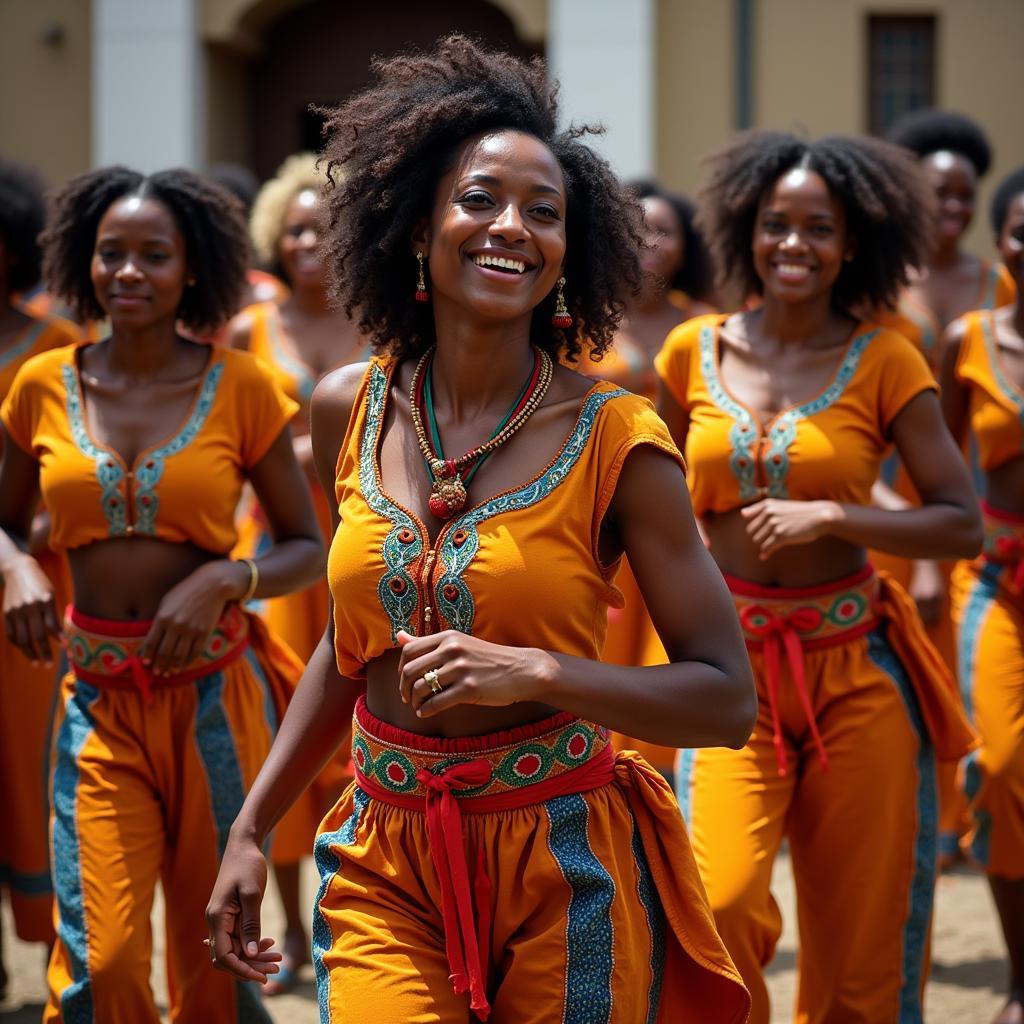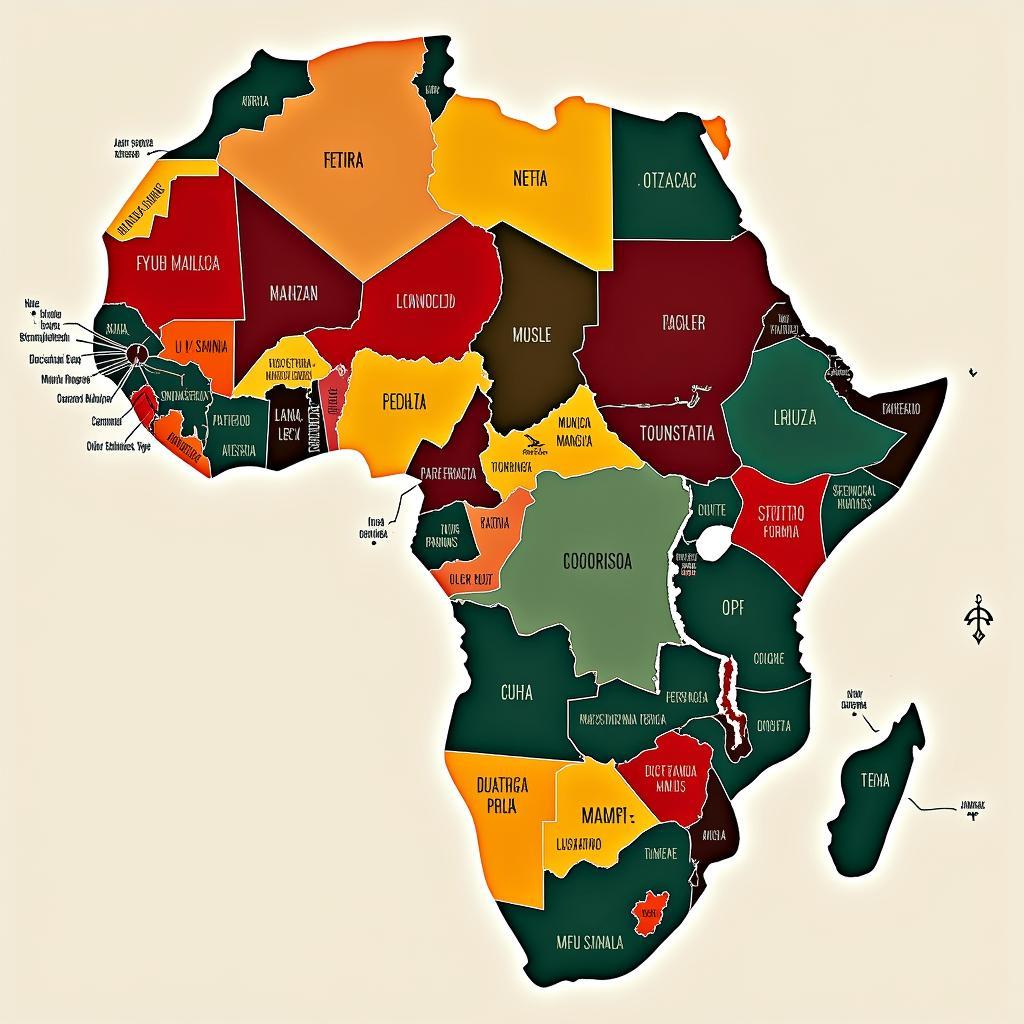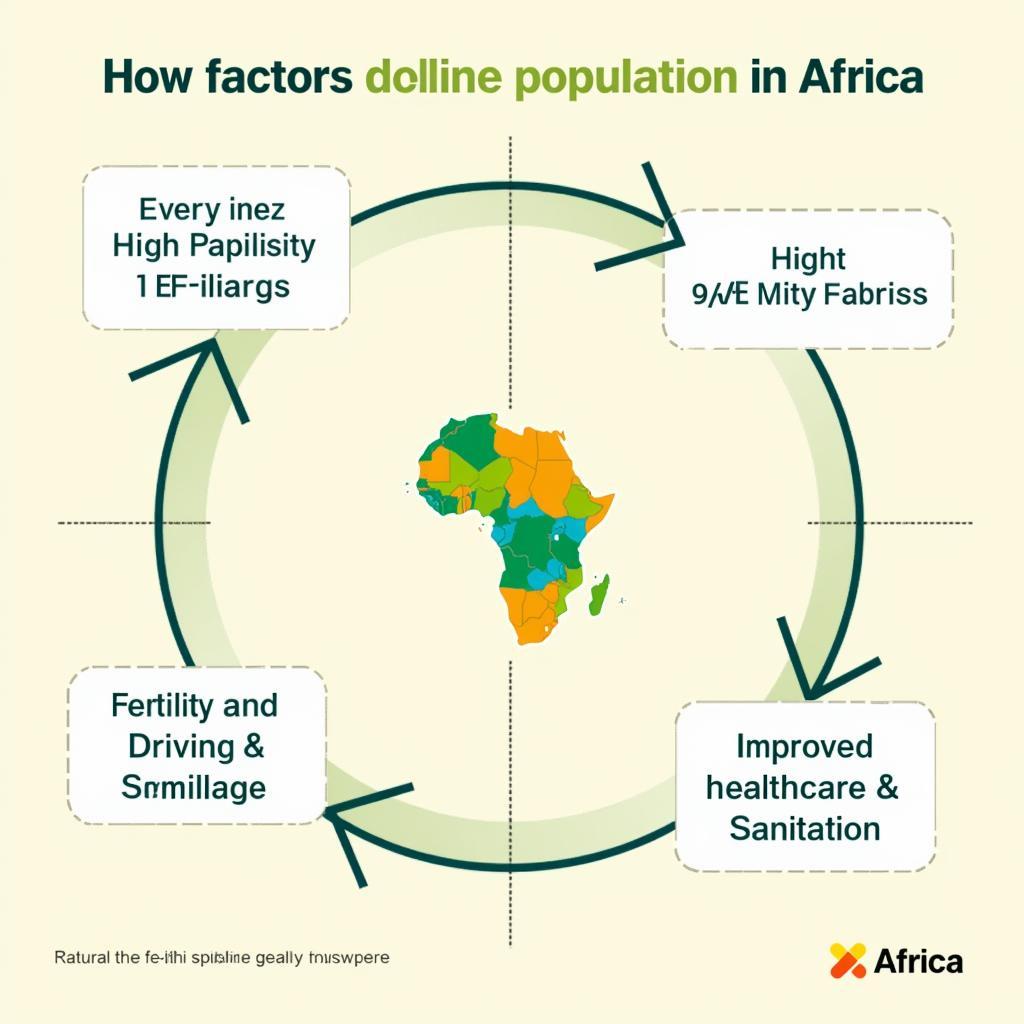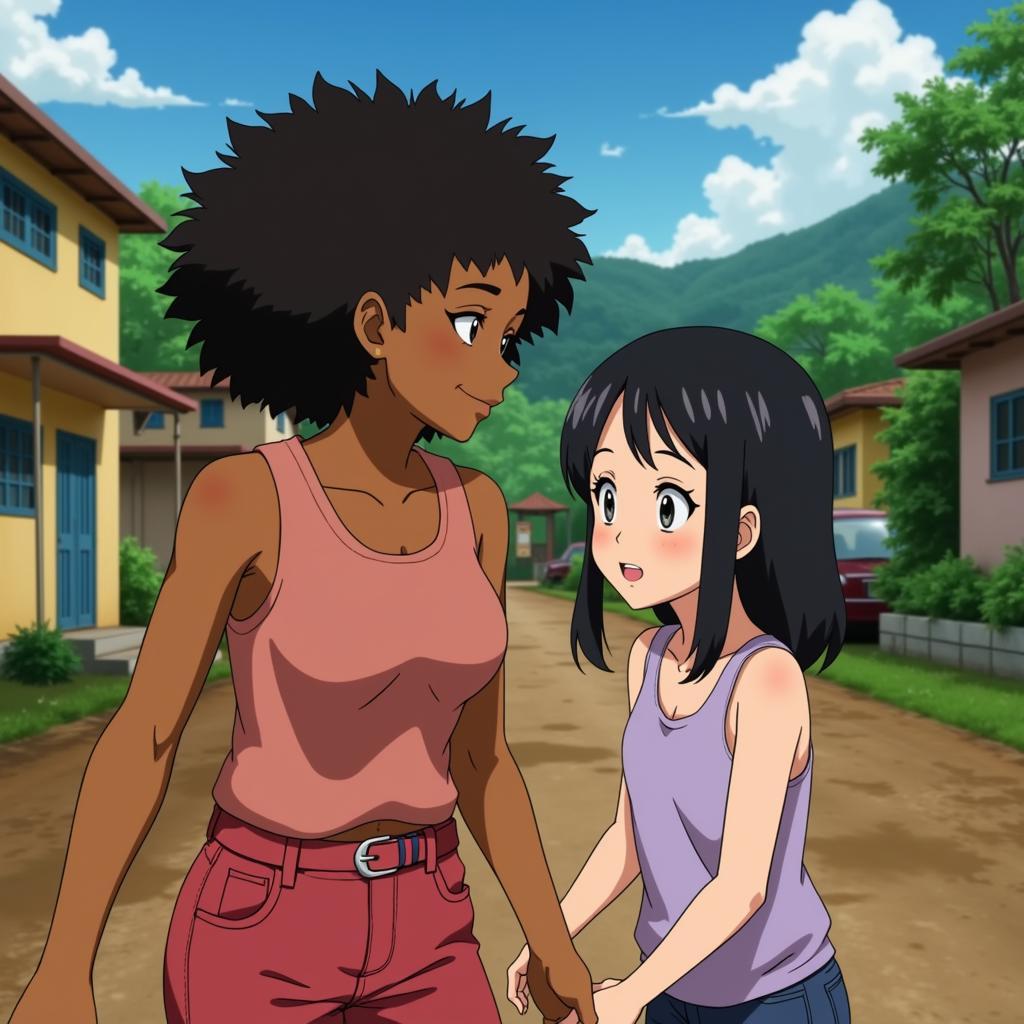Unlocking the Rhythm and Spirit of African Ginga Style
African Ginga style is a captivating dance form that embodies the vibrancy and soul of the African continent. More than just movement, Ginga is an expression of history, culture, and the indomitable spirit of its people. This dance form is characterized by its fluid movements, rhythmic footwork, and infectious energy, making it a mesmerizing spectacle for audiences worldwide.
 Dancers performing African Ginga
Dancers performing African Ginga
Tracing the Roots of Ginga
The origins of African Ginga style can be traced back to various traditional dances across the continent. Each region and cultural group has contributed its unique flavor and interpretation to this dynamic dance form. From the energetic movements of West African dances like Azonto and Coupé-Décalé to the graceful swaying of East African styles, Ginga is a tapestry woven from the rich cultural heritage of Africa.
 A map highlighting the origins of African Ginga
A map highlighting the origins of African Ginga
One cannot speak of African Ginga without mentioning its deep connection to the African diaspora. Through the transatlantic slave trade, African dance forms, including those that influenced Ginga, traveled across the globe, taking root in new lands and evolving into new expressions. This cultural exchange led to the fusion of African rhythms and movements with those of other cultures, giving rise to dance styles like Samba in Brazil, Salsa in the Caribbean, and Jazz in the United States.
Key Elements of African Ginga Style
African Ginga style is characterized by several key elements that distinguish it from other dance forms:
- Fluid Movement: Ginga emphasizes fluidity and grace in every move. Dancers flow seamlessly from one step to another, creating an illusion of continuous motion.
- Rhythmic Footwork: Intricate footwork patterns are fundamental to Ginga. Dancers use a combination of steps, hops, and kicks, often incorporating traditional African rhythms.
- Expressive Upper Body: While the footwork sets the pace, the upper body adds another layer of expression. Dancers use their arms, torso, and head to communicate emotions and tell stories through movement.
- Infectious Energy: Perhaps the most defining characteristic of African Ginga is its infectious energy. The dance is filled with joy, passion, and a celebration of life that transcends cultural boundaries.
Ginga Beyond Dance: A Cultural Phenomenon
African Ginga style’s influence extends far beyond the realm of dance. It has permeated various aspects of African culture, including music, fashion, and even sports. In music, the infectious rhythms and beats of Ginga are evident in numerous genres, from Afrobeat to Kizomba. Fashion designers often draw inspiration from the vibrant colors and flowing silhouettes of traditional African attire worn by Ginga dancers.
The influence of Ginga is also visible in sports, particularly in the captivating footwork and agility displayed by many African football players. The quick steps, sudden changes in direction, and overall fluidity of movement echo the techniques and spirit of Ginga, showcasing the dance form’s impact on other aspects of African culture.
Experiencing the Magic of African Ginga
African Ginga style is a vibrant testament to the rich cultural tapestry of Africa. Through its fluid movements, rhythmic footwork, and infectious energy, Ginga offers a glimpse into the heart and soul of a continent. Whether experienced on a dance floor, a concert stage, or a football field, the captivating rhythm of African Ginga leaves an unforgettable mark on all who witness its magic.

